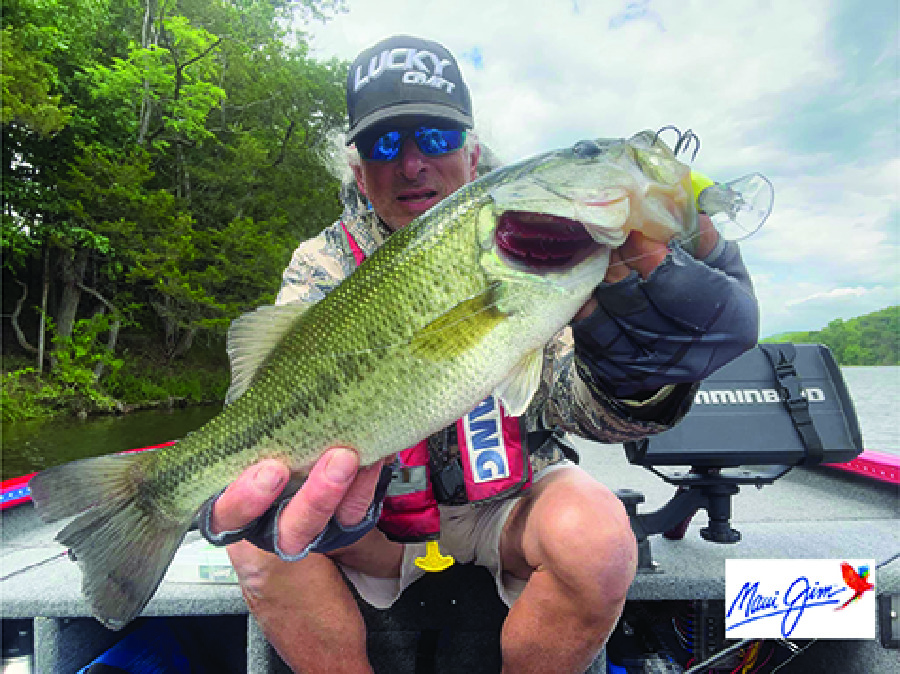It was about 25 years ago, but I remember like it was only yesterday. Jimmy and I met at a boat ramp one afternoon on the Susquehanna River. Our conversation revolved around jet-boats and to set the stage, unlike today when nearly every boat on the river has a jet drive, nearly 3 decades ago, they were far from common. We became good friends and the following year Jimmy retired and was the only buddy I had who now had the time to chase smallmouth as much as I wanted. Rarely did a week go by where we didn’t fish together. For our weekly 2-day ritual that summer, we would select a different boat ramp and meet at “O’Dark-30” as Jimmy put it. He always wanted to be on the water well before sun rise. Even though he was 30 years my senior, his energy level was boundless.
Depending on who’s boat was being used that week, the other would stop by a local tackle shop and pick up 8-10 packs of 5” Jerk Shads in White or Arkansas Shiner for the two days of fishing. Nowadays, where nearly every soft plastic lure manufacturer offers them, the Berkeley Jerk Shad was one of only 3 or 4 soft jerks on the market in the 90’s. At first, we rigged the Jerk Shad on a 4/0 offset hook. This rigging method gave the lure enough weight to make the long casts we needed in shallow clear water. However, we both felt that the hook-up ratio with this rig could be improved. While he went to a larger hook, I abandoned the offset rig for anything that did not require throwing the soft jerk into grass. For open water, I chose to ‘Nose Hook’ the Jerk Shad. This rig allowed the shad to move more freely, and while my hook-up percentage increased, I lost casting distance. Pegging the Berkeley Jerk with a small finishing nail in the center of the lure added just enough weight to make those long casts. Pegging in conjunction with the nose hook offered added movement, long casts and best of all, a higher hook-up ratio. Soon Jimmy was onboard and nose hooking was our soft jerk rig of choice.
The ability to target bass in ultra-clear shallow water with soft plastics is a plus. We fished this peg rig for years, always playing with the nail weight and position. While pegging soft jerks in shallow water produced exceptionally well for us, this lure would continue to evolve and improve. Jimmy was kind of close-lipped when it came to fishing. Never sharing the how, what and where with anyone. Something I never caught on to. Learning and sharing has always been a part of my approach to fishing.
A few years later, I was speaking at an event in Southeastern Pennsylvania. After my seminar, the owner of Winco Custom Lures (now Fitt Lures) approached me and handed me a pack of River Darters. Claiming these were the best lure out there, a common message from all manufacturers, I graciously took the pack and his business card and departed. Smaller lure companies like Winco’s and Case Plastics were placing a liberal amount of salt into their plastisol. This made their soft jerks heavier and removed the need for pegging. Both the Winco River Darter and the Case Sinkin’ Salty Shad would cast further, sink better than any soft jerk on the market. This however came at a cost. Salt made these baits a tad less durable, but something I could live with.
Sink rate is the key here. And most anglers who have not found success with soft jerks, generally have chosen a brand of soft jerks that float or hardly sink. Line choice here is key. The sink rate can be impacted by line choice. Braided line floats and fluorocarbon sinks. I prefer old fashion monofilament fishing line when throwing them. If you prefer super lines, make sure you have a long fluorocarbon leader to help the fall rate. Regardless of your line choice, keep the sink rate in mind.
So here is the set up as we roll into the month of May. April showers have come and gone. Our river levels begin to drop and visibility improves, and the bass are for the most part post-spawn. Green vegetation and grass are starting to show as the river levels recede. In many cases, minnow forage is seeking refuge in, and feeding on insect life that is making these shoreline and midriver grass patches their home. Smallmouth bass know this and take full advantage by venturing into these areas in stealth mode. Top Water plugs should work here, and often do. But Top Water plugs are isolated to the surface, and thrown too close to vegetation, snag up instantly. The soft jerk has the advantage of being both surface and subsurface in its mode of attraction. Essentially two lures in one package.
If soft jerks are not currently in your smallmouth arsenal, this is one amazing lure to add. Put one on the rigging hook you prefer and set out for the shallows. Target the grass lines or shallow gravel flats just a foot or so deep. Make that long cast, twitch the lure and pause a time or two and get ready for some amazing action.



